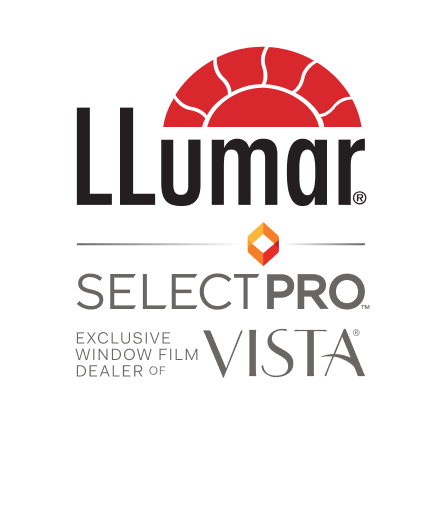
We all know that the sun’s UVA & UVB rays can be harmful when we are exposed to them for too long and that our skin can become burned or damaged when left unprotected. In fact, the sun’s rays are the primary cause of skin cancer. Before the age of 70, one in five Americans will develop skin cancer. So it’s definitely important to be mindful when you are sitting in your naturally lit living room or out for a walk. The sun actually projects several types of UV rays. The rays that cause the most damage to your skin are ultraviolet (UV) rays. Ultraviolet A (UVA), ultraviolet B (UVB), and ultraviolet C (UVC) are the three forms of UV rays. Each can cause damage to unprotected skin. But they differ in the ways they do so. Let’s explore these types of UV rays and what you should know about them and your options for
window tinting near me to help filter out these dangers.
UV Radiation
UV radiation, a type of electromagnetic energy, is found in natural sources, the most common being sunlight. It can also be found in tanning beds, black lights, lasers, and other artificial sources. UV radiation’s most significant source is found in the sun. The nuclear reaction that occurs within the sun’s core is what produces this UV radiation. The sun’s rays transmit this radiation all the way to the earth. The wavelength classifications of UV rays are UVA (longest), UVB (medium), and UVC (shortest).
UVA Rays
UVA light makes up about 95 percent of the UV light that your skin is exposed to. These rays are more harmful than UVB rays since a higher percentage of them are able to reach the surface of the earth. UVA rays are present year-round during daylight. Even on days when the sky is cloudy and we can’t see the sun, the UVA rays are still there. UVA1 and UVA2 are the two types of UVA rays. The wavelength of UVA1 light is between 340 and 400 nm. UVA2 light has a range of 320 to 340 nm. It’s important to know these wavelengths because certain ingredients in sunscreen work better than others in protecting from these wavelengths. UVA rays are the “sun’s silent killers” because you don’t feel the effects of them when they are damaging your skin, only after the damage has been done. Getting a tan by itself isn’t painful unless you burn yourself in the process. Those UVA rays are going deep into the layers of your skin, causing damage throughout. Glass can be penetrated by UVA rays as well. So if you work in an area by windows or are driving without a filter for that UVA radiation, you’re being exposed to these rays. Contact Atlantic Sun Control for an estimate and to learn more about the benefit of our UV protection through
window tinting near you for
solar window film, be it
commercial window tinting, or
residential window tinting
UVB Rays
UVB light has a smaller range compared to UVA light. Its wavelength is between 290 to 320 nm. It is still powerful even though it does not penetrate the skin. You will see the effect of UVB rays on your skin, including sunburns, discolorations, and other changes that are visible on the skin’s surface. The rays vary their degree of intensity based on the time of day, the season, and geographic location. For example, April through October has the strongest presence in the northern hemisphere. These are the times of the year with the most hours of daylight. UVB light is present year-round, similar to UVA rays, but it is more common in sunny climates. Sand, water, and snow all reflect UVB lights. Higher altitudes increase UVB’s light damaging potential.
UVC Rays
UVC is the least concerning from the perspective of skin damage. The earth’s ozone layer typically filters these longer wavelength rays and prevents them from reaching the ground.
Protecting Yourself from UV Radiation If Don't Have Solar Window Tinting
Luckily there are things that you can do to protect yourself from UV radiation if you don't have solar window film at the office or solar film for home windows or if you happen to be outdoor for a long period. To limit the effects of UVA and UVB rays on your skin, you should consider the following tips:
- Use sunscreen - Look for a sunscreen that has broad-spectrum protection. This basically means that it has the capability to block out UVA and UVB rays. Use at least a sunscreen that is 30 SPF or higher, as recommended by the American Academy of Dermatology.
- Cover yourself - You can get some protection from UV exposure by covering yourself with clothing. The best type of fabric is tightly-woven and dry.
- Wear sunglasses - Protect your eyes and the skin around them by wearing sunglasses that have UV protection.
- Wear a hat - Protect your ears and neck with a wide-brimmed hat.
- Stay under shade - UV rays are stronger from 10 am to 4 pm, so limit your exposure to direct sunlight by keeping under the shade for cover. It’s also a bit cooler under the shade, which can be helpful in hot, summer weather.
Call Atlantic Sun Control for UV Window Tinting Film and ask about our
Solar Window Film
UVA rays will pierce through unprotected window tinting without a problem, increasing the risk of harmful sun damage and is why you should consider solar control window film, also known as a solar film for windows, and even
window film for heat and
light blocking window film. UV window tinting film can protect your residential, vehicle, or commercial properties. Call us today to schedule your estimate. 703-687-0154.

